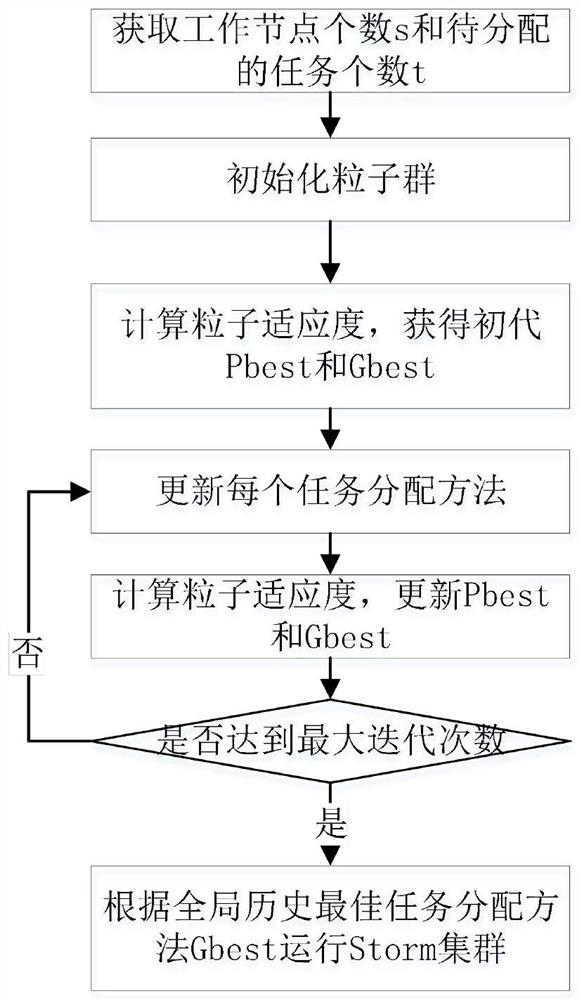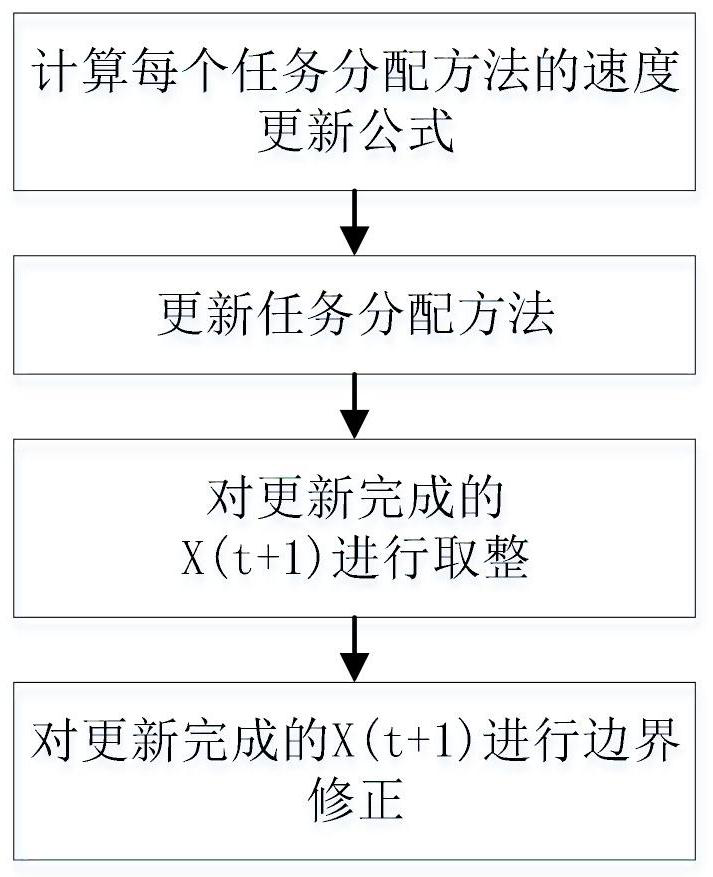Storm cluster load balancing method and system based on discrete particle swarms
A cluster load balancing and discrete particle swarm technology, applied in multi-program devices, program control design, instruments, etc., can solve the problems of reduced service life, inability to fully utilize Storm cluster performance, insufficient memory of working nodes, etc.
- Summary
- Abstract
- Description
- Claims
- Application Information
AI Technical Summary
Problems solved by technology
Method used
Image
Examples
Embodiment Construction
[0049] The present invention will be described in detail below in conjunction with the accompanying drawings and specific embodiments.
[0050] In the Storm cluster load balancing method based on discrete particle swarms of the present invention, when multiple tasks are running on each working node, the degree of load dispersion F of all working nodes in the Storm cluster measures the degree of load balancing:
[0051] Where k represents the number of types of performance indicators of the working nodes, and the smaller the F value, the greater the degree of load balancing; the present invention uses the discrete particle swarm optimization algorithm to obtain the minimum value of F, so the fitness function in the discrete particle swarm optimization algorithm is calculated using F.
[0052] The selection of the performance index used to characterize the load of the working node selected in this embodiment is as follows:
[0053] To reasonably arrange the load of all working...
PUM
 Login to View More
Login to View More Abstract
Description
Claims
Application Information
 Login to View More
Login to View More - R&D
- Intellectual Property
- Life Sciences
- Materials
- Tech Scout
- Unparalleled Data Quality
- Higher Quality Content
- 60% Fewer Hallucinations
Browse by: Latest US Patents, China's latest patents, Technical Efficacy Thesaurus, Application Domain, Technology Topic, Popular Technical Reports.
© 2025 PatSnap. All rights reserved.Legal|Privacy policy|Modern Slavery Act Transparency Statement|Sitemap|About US| Contact US: help@patsnap.com



